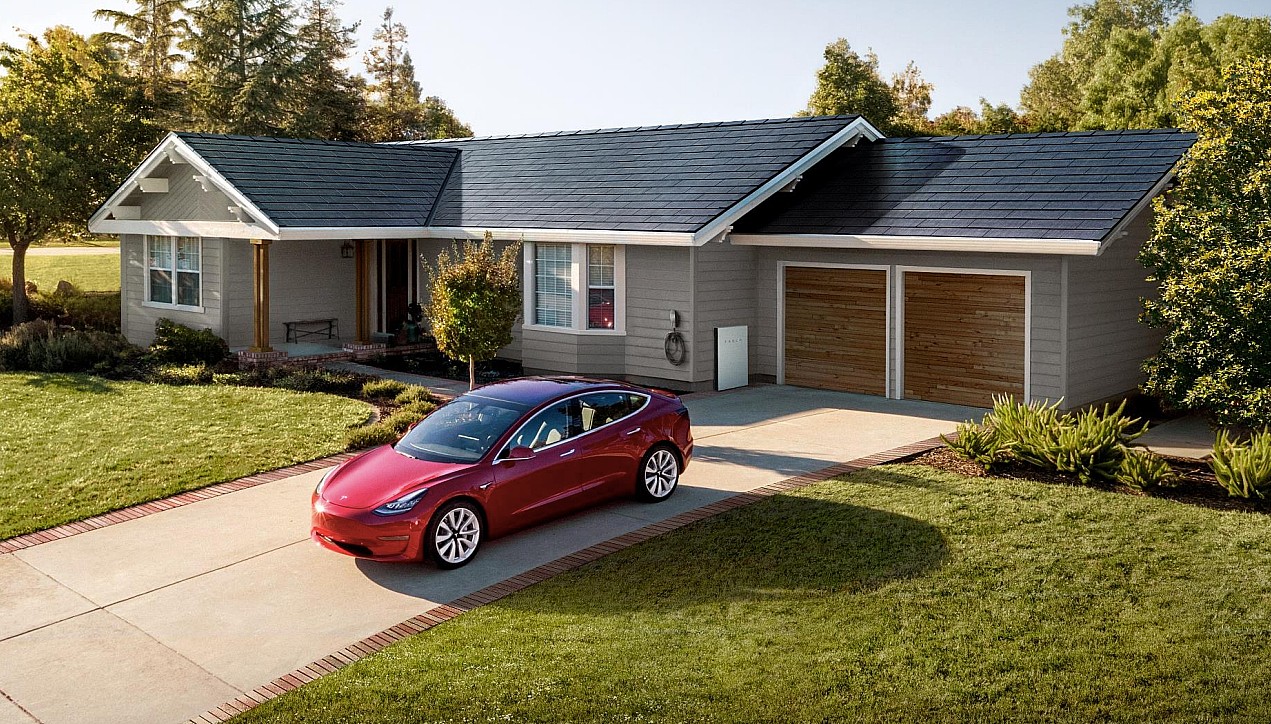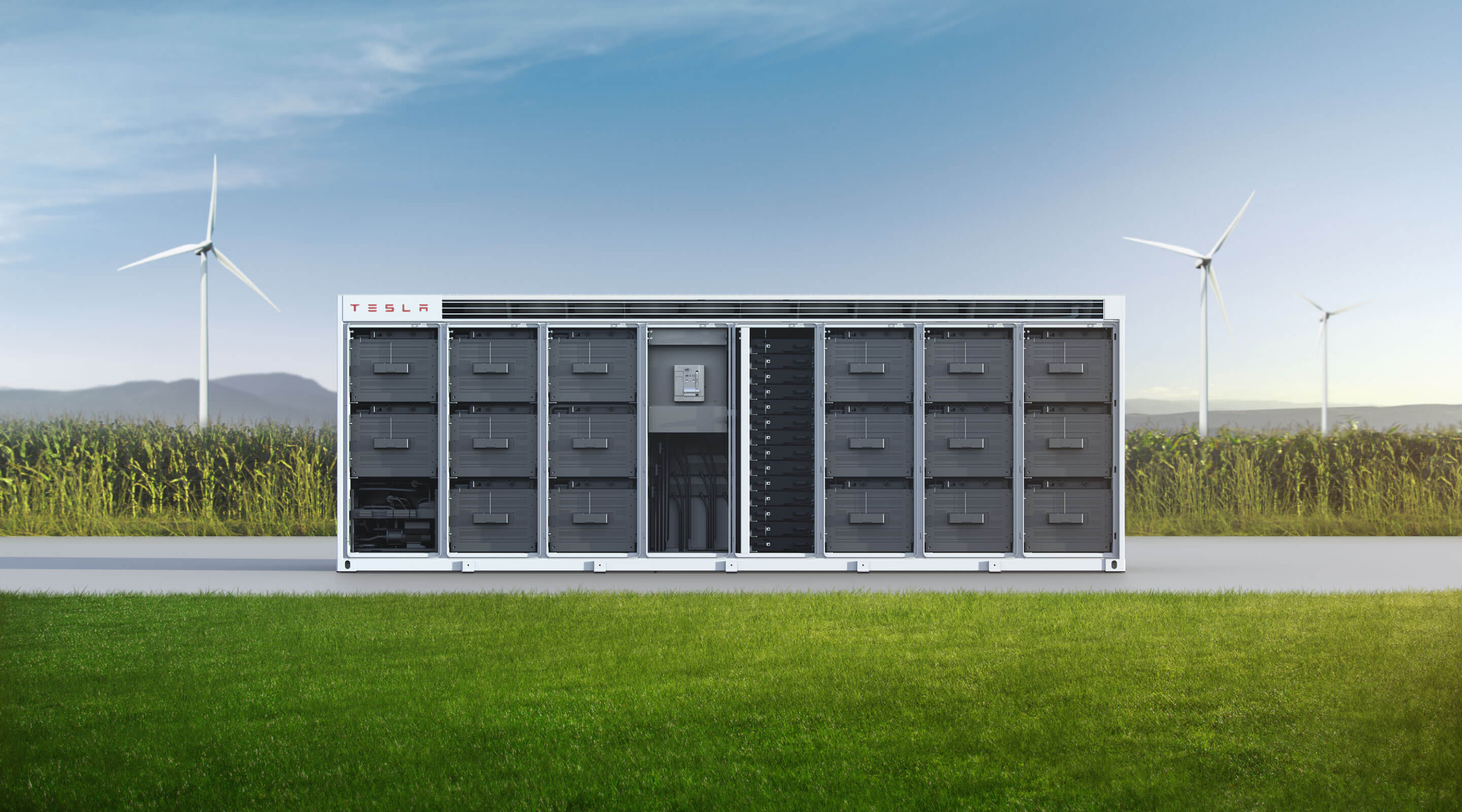

Energy
It’s time for Tesla Energy to be recognized by Wall Street
Tesla’s Energy division is big, and it is time Wall Street starting recognizing its achievements when talking about the company’s stock and its skyrocketing price.
One thing I notice when reading analyst notes or even investment expert’s thoughts on Tesla is their views are primarily based on the automotive side of things, and rarely do we see any stock insight on the energy side of the business. To me, this is unacceptable because the energy portion of the company is sizeable, and it is just as much a part of the transition to sustainable energy as the vehicles are. In fact, it could be more.
I sit and think about all of the TSLA articles I’ve written over the past few months while the stock has skyrocketed into a realm of Wall Street legends. It’s up almost 4x for the year, and basically, every evaluation or investment note from every big investment firm talks about automotive technology improvements, the company’s performance in other countries and markets, or how batteries are leading the charge in terms of EV range.
But why not talk about the energy side of things? Why not talk about Tesla’s other endeavors, which continue to grow quarter after quarter. Why is this side of the business being swept under the rug so often? Is it because cars are used by everyone, and perhaps everyone in the world could own a Tesla vehicle, and not everyone could own solar because of their environment or climate?
I don’t think that could be the reason, because Tesla vehicles are not available everywhere in the world as of right now either. But let’s be honest and look at the facts of what Tesla Energy is instead of what it isn’t.

Tesla’s Energy division will end up being as big as the automotive side of things. At least, that’s what Elon Musk said during the Q2 Earnings Call earlier this week. It certainly has the potential to be just as big, if not bigger, than the automotive side of things. Eventually, people will have to ditch their current power source for their home.
Solar is becoming cheaper, and with Tesla’s subscription and rental programs, people can afford to have world-class solar panels attached to their house for a fraction of the price. They also will not be forced to put out lump sums of cash in order to install solar panels on their home.
This is a preview from our weekly newsletter. Each week I go ‘Beyond the News’ and handcraft a special edition that includes my thoughts on the biggest stories, why it matters, and how it could impact the future.
A big thanks to our long-time supporters and new subscribers! Thank you.
Tesla Solar is also one-third less expensive than the industry average, according to the Q2 2020 Update Letter. Additionally, Solar Roof installations “roughly tripled” from Q1 to Q2, which is an outstanding statistic because it means the company is truly stepping up its game in terms of output in that front.
Powerwalls and Powerpacks for large-scale projects are also being used at more locations. In Australia, the Tesla Big Battery continues to save the area it is located in from widespread power outages, and other systems are being used across the country to transition the world to sustainable energy production and storage.
Elon and Senior Vice President, Powertrain and Energy Engineering Drew Baglino, talked about the Megapack as well during the Q2 Earnings Call. Megapack has continued to help the company integrate grid-tied storage in rapidly.

The interesting thing is, there are a lot of people who look at Tesla as an “automaker” and not as a technology company or an energy solutions company. People only look at their cars as their business, and to be honest, it’s kind of disappointing that people don’t realize that they have a world-class energy business that also offers sustainable alternatives.
Ultimately, Tesla has a lot of potential in energy, and the value of the company’s stock could be even more than what it already is. Many TSLA bulls believe that there is a limitless possibility for the company’s stock price. Some believe $2k; others believe $10k. Whatever you believe, do you think that the energy side of the company should be more involved in analyst evaluations?
Let me know by emailing me or Tweeting me!
Disclosure: I have no ownership in shares of TSLA and have no plans to initiate any positions within 72 hours.

Cybertruck
Tesla updates Cybertruck owners about key Powershare feature

Tesla is updating Cybertruck owners on its timeline of a massive feature that has yet to ship: Powershare with Powerwall.
Powershare is a bidirectional charging feature exclusive to Cybertruck, which allows the vehicle’s battery to act as a portable power source for homes, appliances, tools, other EVs, and more. It was announced in late 2023 as part of Tesla’s push into vehicle-to-everything energy sharing, and acting as a giant portable charger is the main advantage, as it can provide backup power during outages.
Cybertruck’s Powershare system supports both vehicle-to-load (V2L) and vehicle-to-home (V2H), making it flexible and well-rounded for a variety of applications.
However, even though the feature was promised with Cybertruck, it has yet to be shipped to vehicles. Tesla communicated with owners through email recently regarding Powershare with Powerwall, which essentially has the pickup act as an extended battery.
Powerwall discharge would be prioritized before tapping into the truck’s larger pack.
However, Tesla is still working on getting the feature out to owners, an email said:
“We’re writing to let you know that the Powershare with Powerwall feature is still in development and is now scheduled for release in mid-2026.
This new release date gives us additional time to design and test this feature, ensuring its ability to communicate and optimize energy sharing between your vehicle and many configurations and generations of Powerwall. We are also using this time to develop additional Powershare features that will help us continue to accelerate the world’s transition to sustainable energy.”
Owners have expressed some real disappointment in Tesla’s continuous delays in releasing the feature, as it was expected to be released by late 2024, but now has been pushed back several times to mid-2026, according to the email.
Foundation Series Cybertruck buyers paid extra, expecting the feature to be rolled out with their vehicle upon pickup.
Cybertruck’s Lead Engineer, Wes Morrill, even commented on the holdup:
As a Cybertruck owner who also has Powerwall, I empathize with the disappointed comments.
To their credit, the team has delivered powershare functionality to Cybertruck customers who otherwise have no backup with development of the powershare gateway. As well as those with solar…
— Wes (@wmorrill3) December 12, 2025
He said that “it turned out to be much harder than anticipated to make powershare work seamlessly with existing Powerwalls through existing wall connectors. Two grid-forming devices need to negotiate who will form and who will follow, depending on the state of charge of each, and they need to do this without a network and through multiple generations of hardware, and test and validate this process through rigorous certifications to ensure grid safety.”
It’s nice to see the transparency, but it is justified for some Cybertruck owners to feel like they’ve been bait-and-switched.
Energy
Tesla starts hiring efforts for Texas Megafactory
Tesla’s Brookshire site is expected to produce 10,000 Megapacks annually, equal to 40 gigawatt hours of energy storage.

Tesla has officially begun hiring for its new $200 million Megafactory in Brookshire, Texas, a manufacturing hub expected to employ 1,500 people by 2028. The facility, which will build Tesla’s grid-scale Megapack batteries, is part of the company’s growing energy storage footprint.
Tesla’s hiring efforts for the Texas Megafactory are hinted at by the job openings currently active on the company’s Careers website.
Tesla’s Texas Megafactory
Tesla’s Brookshire site is expected to produce 10,000 Megapacks annually, equal to 40 gigawatt hours of energy storage, similar to the Lathrop Megafactory in California. Tesla’s Careers website currently lists over 30 job openings for the site, from engineers, welders, and project managers. Each of the openings is listed for Brookshire, Texas.
The company has leased two buildings in Empire West Business Park, with over $194 million in combined property and equipment investment. Tesla’s agreement with Waller County includes a 60% property tax abatement, contingent on meeting employment benchmarks: 375 jobs by 2026, 750 by 2027, and 1,500 by 2028, as noted in a report from the Houston Business Journal. Tesla is required to employ at least 1,500 workers in the facility through the rest of the 10-year abatement period.
Tesla’s clean energy boom
City officials have stated that Tesla’s arrival marks a turning point for the Texas city, as it highlights a shift from logistics to advanced clean energy manufacturing. Ramiro Bautista from Brookshire’s economic development office, highlighted this in a comment to the Journal.
“(Tesla) has great-paying jobs. Not just that, but the advanced manufacturing (and) clean energy is coming to the area,” he said. “So it’s not just your normal logistics manufacturing. This is advanced manufacturing coming to this area, and this brings a different type of job and investment into the local economy.”
Energy
Tesla and Samsung SDI in talks over new US battery storage deal: report
The update was related by industry sources and initially reported by South Korean news outlets.

Recent reports have suggested that Tesla and Samsung SDI are in talks over a potential partnership to supply batteries for large-scale energy storage systems (ESS).
The update was related by industry sources and initially reported by South Korean news outlets.
ESS batteries to be built at Samsung’s Indiana plant
As noted in a report from Korea JoongAng Daily, the demand for energy storage systems has been growing rapidly in North America, thanks in no small part to the surge in AI investments across numerous companies. With this in mind, Tesla has reportedly approached Samsung SDI about a potential battery supply deal.
The deal is reportedly worth over 3 trillion Korean won (approximately $2.11 billion) and will span three years, according to The Korea Global Economic Daily. A battery supply deal with Samsung SDI could make sense for Tesla as the company already has a grid-scale battery, the Megapack, which is perfect for industrial use. Samsung SDI could simply supply cells for the EV maker.
Production of the batteries would reportedly take place at Samsung SDI’s joint venture factory with Stellantis in Indiana, which is currently under construction. Samsung SDI recently announced plans to use part of that plant’s EV lines to produce cells for ESS, with a targeted capacity of 30 GWh by the end of next year.
Tesla and Samsung’s partnership
At present, only a handful of manufacturers, including Korea’s LG Energy Solution, Samsung SDI, SK On, and Japan’s Panasonic, are capable of producing energy storage-scale batteries domestically in the United States. A Samsung SDI official issued a comment about the matter, stating, “Nothing has been finalized regarding cooperation with Tesla.”
The possible energy storage system deal adds another layer to Tesla’s growing collaboration with Samsung, which is already in line as a partner in the upcoming production of Tesla’s AI5 and AI6 chips. Early sample manufacturing of the AI6 is expected to begin in South Korea, with mass production slated for Samsung’s Texas-based Taylor foundry when it starts operations.
The AI6 chip will power Tesla’s next wave of high-volume projects, including the Optimus humanoid robot and the autonomous Cybercab service. Musk has called the partnership with Samsung a “real collaboration,” adding that he personally plans to “walk the line” at the Taylor facility to speed up progress.








